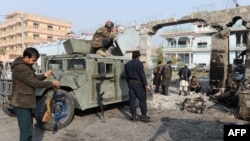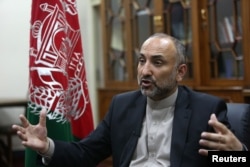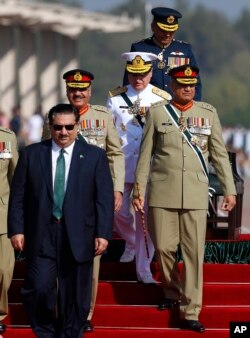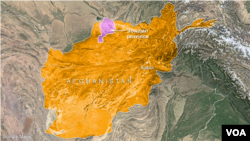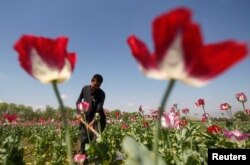Efforts to bolster Afghanistan’s armed forces, along with an increased use of American air power, seem to be doing little to change the country’s reputation as a magnet for foreign fighters and jihadists.
Afghan officials have been warning for months about the flow of 3,000 foreign fighters, many of whom had been coming from Pakistan and Uzbekistan to join the Islamic State terror group’s Afghan affiliate, IS-Khorasan.
Now, officials are warning of a new surge of jihadists, many coming to Afghanistan from places like Iraq and Syria via routes that lead through Pakistan.
“There has been a growth in the number of the foreign fighters in the country,” Afghan National Security Adviser Mohammad Hanif Atmar said during a visit to Washington last week. “We’re talking about hundreds of them coming from the Middle East through Pakistan, and other regional groups.”
Afghan and Western officials say that while precise numbers are hard to come by, unlike before, the fighters are not focused only on joining IS.
Many are flocking to other terror groups operating within Afghanistan's borders, including al-Qaida, the Islamic Movement of Uzbekistan, the Eastern Turkistan Islamic Movement, Lakshar-e-Taiba and Jaish-e-Mohammad.
Afghan officials worry this current influx is helping to create a changing dynamic in which these terror organizations are forging new ties with each other and the Taliban, allowing them to collectively benefit, even as they compete for people and resources.
“They have a symbiotic relationship with the Taliban, and the Haqqani and the drug networks,” Atmar said.
“The foreign fighters need Taliban as their local host and protector,” he added. “And the Taliban need them for their knowledge, their expertise and their resources.”
Pakistan's counterterror role
Atmar and other officials believe Pakistan could help reduce the problem if officials in Islamabad choose to help.
"There will be no foreign fighters without Taliban in Afghanistan and there will be no Taliban insurgency without sanctuaries in Pakistan," the Afghan national security adviser said. "So, we need to see some action."
Pakistan, though, has been pushing back.
“[Nearly] half of the country is a safe haven,” Pakistani Defense Minister Khurram Dastgir said of Afghanistan, in an exclusive interview with VOA this week.
“You don’t control 45 percent of Afghanistan and don’t know what is going on there, who is there, who is moving in and out of that safe haven, but you keep blaming us,” Dastigir said.
U.S. officials say Pakistan has been somewhat more helpful when it comes to terrorism since President Donald Trump unveiled his South Asia strategy, freezing nearly $2 billion in aid unless Islamabad took more decisive action against terrorists operating along the border with Afghanistan.
But U.S. officials say they are still looking for more to be done, especially when it comes to Islamic State-Khorasan.
“These IS-K fighters are primarily Pakistani Pashtun,” General John Nicholson, the commander of U.S. Forces-Afghanistan, said in a statement last week.
Fighters flocking to Jowzjan
One area of ongoing concern for U.S. military officials has been Afghanistan's northern Jowzjan province, a remote area where IS has been relocating fighters from Pakistan and from the Islamic Movement of Uzbekistan.
IS fighters from places like Tajikistan and Chechnya, as well as some from as far away as France and Sudan, also have been flocking to the area despite U.S. efforts to disrupt the group's operations there.
According to Afghan security officials, at least 80 IS foreign fighters are in custody, with discussions underway about whether they should be kept in Afghanistan or returned to their countries of origin.
Making counterterrorism efforts much more difficult have been the deep ties many of the terror groups have forged with drug traffickers.
“They are all drawing on the criminalized economy,” said Afghanistan’s Atmar. “The drug networks need them. They need the drug income.”
According to U.S. military officials, the Taliban alone are bringing in an estimated $200 million a year from drugs.
Afghan officials also suspect terrorists may be getting help from countries in the region and beyond.
They accuse Russia, in particular, of trying to strengthen some terrorist groups in order to weaken others, while peddling false narratives — allegations Moscow denies.
“We also get concerned when they [Russia] claim there are U.S., NATO, Afghan unmarked helicopters bringing so-called Daesh from the south or even the tribal areas of Pakistan to the north of the country,” Atmar said, using an Arabic acronym for Islamic State.
Ayaz Gul in Islamabad contributed to this report.




